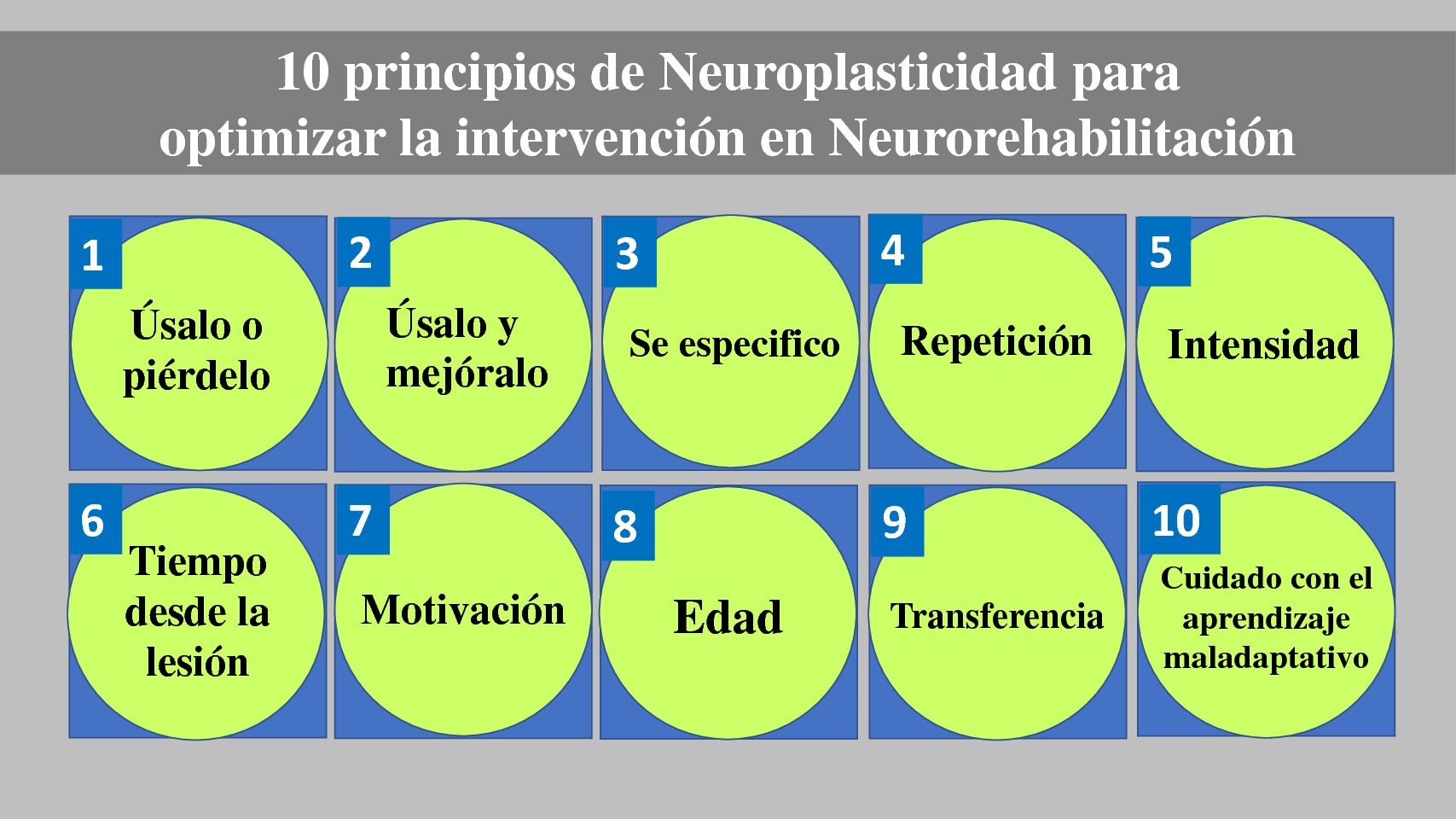
- Use it or lose it
Decreased activation of specific brain areas can lead to functional degradation. Encourage the patient to perform the movements that he can do on his own and assist the movement that he cannot perform. Since it has been shown that the decrease in use or performance of a movement can cause a loss of this incipient ability to perform a movement.
- Use it and improve it
The training of a specific brain function can lead to the improvement of that function.
- Be specific
The nature of the training experience dictates the nature of plasticity. That is, if we want to cause improvements in the activation of patients’ motor cortex, we must be specific in the design of interventions to ensure the acquisition of new skills or the acquisition of lost skills.
- Repeat
To induce plasticity, enough repetition is necessary. The repetition of an activity tends to cause lasting neuroplastic changes that facilitate learning stability. The use of new technologies provides a great help at this level, since they allow the patient to repeat a desired movement many times.
- Intensity
To induce plasticity, intense training (amount of activity per period) is required. 100 repetitions of an exercise are better than 40. However, a negative side effect that worsens the function has been described if an amount of extreme use is made in the vulnerable period after the injury after a stroke. There is an increase in the extiotoxicity of vulnerable tissues that involve the primary lesion. The intensity should be adapted to the patient’s level to obtain optimal results.
- Duration of therapy
Different forms of plasticity occur at different times. Functional changes in synapses become, over time, structural changes, outbreaks of neuronal growth and formation of new synapses, leading to cortical reorganization. Therpy must be durable enough to generate neuroplasticity.
- Motivation
The experience must be remarkable and innovative enough to induce plasticity. We must generate emotion during treatment as emotions modulate memory consolidation.
- Age
While it is true that plasticity occurs more easily in young brains, it does not mean that older adults do not have these abilities. What happens is that they need to compensate by activating more brain areas to maintain good functionality.
- Transfer
Plasticity in response to a training experience can improve the acquisition of similar behaviours. The best way is to integrate everything learned in therapy, into the activities of the daily life of patients, so that there is frequent use of skills and progressively improve the performance of tasks.
- Beware of maladaptive learning
In the initial stages after the injury, compensatory behaviours, for example, hight trunk movement to replace loss of upper limb function, interfere with the relearning of lost function. Thus, they limit the acquisition of movements in the upper limb and reduce the work requirement of the arm. In more advanced phases, in many occasions the compensations allow to integrate the affected limb in the activities of the daily life, integrating the capacities learned in the therapy and improving the performance of the patients.
In the design of the neurological rehabilitation sessions, these principles should be considered to improve the motor learning of patients, promote neuroplasticity and achieve better treatment results.
Kleim J, Jones T. Principles of experience-dependent neural plasticity: implications for rehabilitation after brain damage. Journal of speech, language and hearing research. 2008; 51: S225-S239.